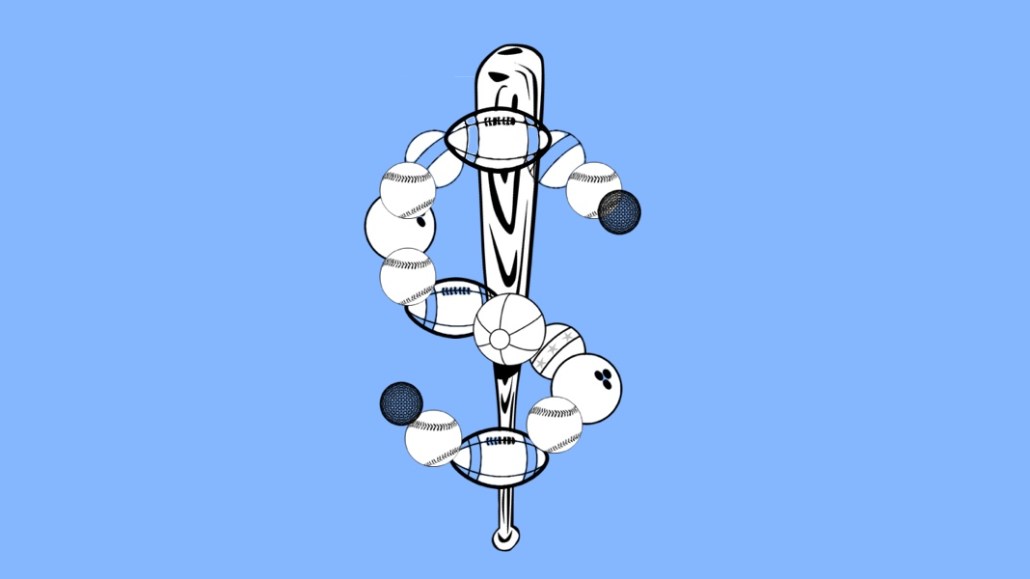With no games, sports publishers turn to user-generated content

There may not be any live sports programming on television, but sports publishers need something to publish. So many have turned to user-generated clips of amateur athletes sourced from platforms like Instagram, TikTok and Twitter.
For the first two weeks after the NBA announced it was suspending its season last month, close to 90% of the videos House of Highlights posted to its Instagram account consisted of those kinds of clips, House of Highlights GM Doug Bernstein said. Today, the balance is closer to 70-30, with archival material and clips from old games accounting for the rest. That ratio is a stark departure from House of Highlights’ beginnings, when close to 70% of its Instagram output came from NBA game highlights.
This past week, ESPN announced a partnership with Facebook in which amateur videos sourced from Facebook would be featured on SportsCenter, and new ESPN hire Omar Raja would host a show featuring similar clips on Facebook Watch.
And Whistle, a distributed video publisher behind brands including “No Days Off,” plans to lean more into user-generated clips to keep its production output high. Whistle has been looking at how to repackage user-generated content it has already licensed and acquired over the years, Whistle svp of content and brand platforms Joe Caporoso said. (Those plans may take a moment to appear in audience feeds; Whistle generally produces content for its brands six weeks ahead of posting.)
While sports broadcasters and publishers have always made time for the occasional trick shot or viral video, the need for user-generated sports content has gotten so pronounced that broadcasters are now engaging companies like Jukin Media in development discussions, as part of a broader trend of production companies hunting for clip shows.
“We’ve seen that conversation develop,” said Brendon Mulvihill, svp and head of licensing at Jukin Media. “It’s starting to broaden to, ‘How do we help with programming?’”
Thanks to March Madness, the start of the NBA playoffs, the NFL Draft, and the start of the MLB season, March and April are typically strong months for sports publishers. But with sports leagues suspending their seasons, sports publishers have turned back to them. Traffic to sports sites is down more than 25% year over year, according to Comscore data.
Yet on social platforms, the pivot to amateur content has driven healthy growth. Since the NBA suspended its season, House of Highlights has grown its combined social following 30%, Bernstein said. On Instagram, still its largest platform, user-generated content accounted for 18 of House of Highlights’ 20 top-performing posts this past month.
House of Highlights has a team of three people whose job it is to find and secure the rights to viral videos for its Instagram and TikTok accounts. Wave, a sports-focused publisher that mostly focuses on less mainstream sports including combat sports and motor sports, has a team of people that sources and manages audience-submitted clips.
User-generated content typically needs to be licensed from the people who create and own it, which sometimes requires paying them directly. But producing a video using viral clips still costs around 20% less than a video of original content, Caporoso said.
But those kinds of posts also tend not to attract the same level of advertiser interest as slicker, more highly-produced original content. Caporoso said Whistle’s UGC videos tends to generate about 25% less revenue on a direct-sold basis than original content.
But they can serve as inspiration for branded content productions. A majority of the branded content House of Highlights produced last year was made to look like amateur videos, Bernstein said.
“We’re not trying to recreate a commercial you’d see on TV,” Bernstein said. “We’re really trying to reflect what the audience would create on their own.”
More in Media

Media Briefing: The top trends in the media industry for 2025
This week’s Media Briefing takes a look at the top trends from 2025, from digital advertising revenue performance to AI licensing deals.

Digiday Scorecard: Publishers rate Big Tech’s AI licensing deals
Digiday has compiled a scorecard grading AI platforms to make sense of the growing number of players in the AI content licensing market.

Publishers are hunting for AI prompt data — now they’re starting to get it from third-party companies
Publishers are finally gaining some visibility into AI search, as new prompt data tools crack open a black box.








